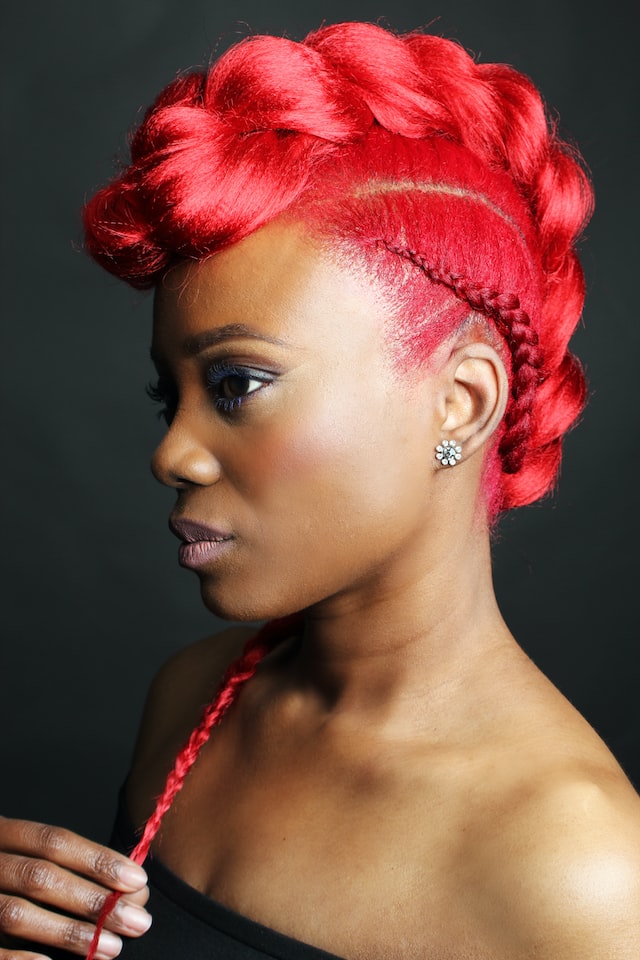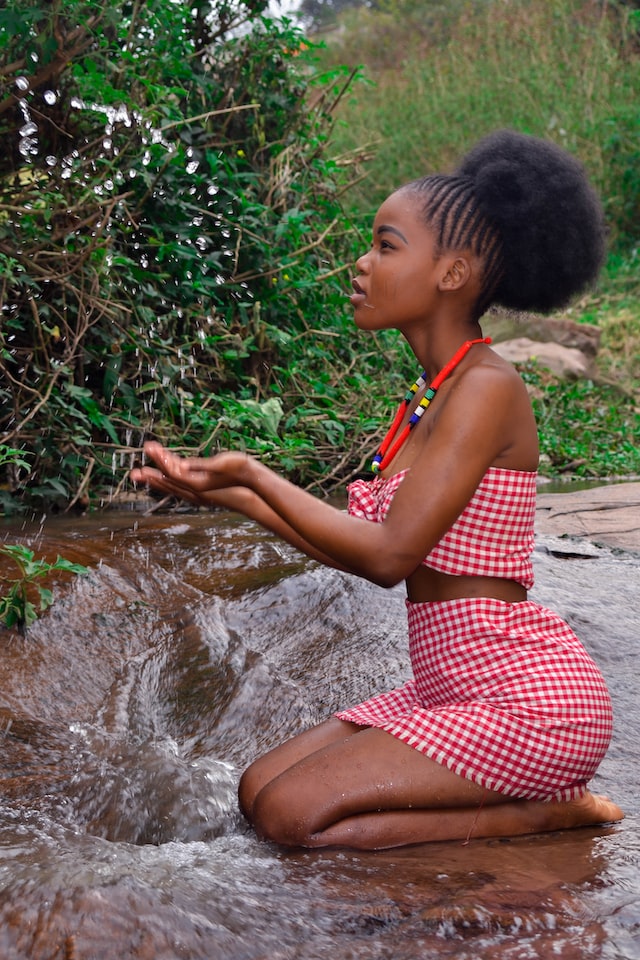Traditional African Hairstyles And Their Origin

Africa’s symbol of rich cultural heritage is the traditional African hairstyles. In old African social orders, the hairstyle was a huge element that represents status. It was likewise utilized as an instrument of spiritual divination.
Today, large numbers of those traditional African hairstyles have crossed the Atlantic into the western world. Periodically, traditional African hairstyles help to distinguish between ethnic groups.
Why Braids Hairstyle is Unique to Africa?
Braid was one of the dominating traditional African hairstyles. Various clans had a particular way they braided their hair.
Strangely, in traditional African societies, the manner in which you braid your hair could tell or decipher your marital & financial status, tribe, age, and if you’re a virgin, etc.
A rundown of 10 fascinating traditional African hairstyles

1. Traditional African Hairstyles: Amasunzu
Amasunzu finds its underlying foundations among the Tutsi and Hutu people of Rwanda. Going back over 500 years, this traditional African hairstyle was worn by individuals of social status. Warriors wore it to mean strength and grit. Young girls wore it as an image of their virginity.
2. Traditional African Hairstyles: Bantu Bunches
Bantu Bunches is a traditional African hairstyle that started in the Zulu nation of Southern Africa.
All through its presence, women have worn it as an image of femininity and status.
The Bantu hairstyle is one in which the hair is divided into segments and afterward wrapped to shape twisting bunches.
Bantu bunches are truly simple to manage and can last for about a month. All you really want is a styling gel to hold your edges down to draw out the hairstyles gleam.
Rihanna calls her Bantu bunches ‘Ghetto’.
Also Read: 20 Stunning Braided Updo Hairstyles For Black Women
3. Fulani Braids

Fulani plaits are normal among West Africans.
This traditional African hairstyle is native to the Fulani nation of West Africa. The hairstyle stays an image of personality for Fulani women.
Fulani braids is made by separating the hair in the center (and side). Then, at that point, they are interlaced into small cornrows. Most times, wearers decorate them with hair frills like rings and dabs.
This traditional African hairstyle is turning into a style and acquiring consideration among other ethnic gatherings.
4. Traditional African Hairstyles: African Threads
African string is an exceptionally traditional African hairstyle all around the landmass.
The utilization of strings for braids hair is normal among the Yoruba nation of southwestern Nigeria. Over the long haul, strings have become famous all over West Africa.
Among the various African clans, strings have assorted names including Los, Eko Extension, Akula, Sunga, and so forth.
It is a characteristic hair straightener, which has been a significant piece of hair care schedules for quite a long time. Contingent upon the nature of the string, it can endure vertically of about a month and a half.
5. Traditional African Hairstyles: Zulu Braids

As the name suggests, this traditional African hairstyle is worn by women as symbol of status in the zulu communtiy — only the royal wore them.
Nowadays, albeit still intensely worn by Zulus, Braids have saturated different societies, like the Ethiopians and Somalis.
Zulu Braid is produced using hair assembled into hitches and extended into segments with a tie. A few ladies enhance their bunches with gems.
6. Ochre Dreadlocks
Customary Hamar dreadlocks.
Ochre gridlock is a social image of the Hamar clan of Ethiopia. At the point when the Hamar people settled at Omo Valley, they mixed into the general society of migrants that they met there. Along with these nomads, they developed this traditional African hairstyle and called it ‘Goscha’.
Also Read: African Hairstyles’ Social Importance and Spiritual Significance
7. Himba Dreadlocks

Himba is a clan in Northwestern Nambia. For the Himbas, dreadlocks represent age and life. Himba beauticians utilize a combination of margarine, ochre, and goat hair to make the locks. They likewise use hair expansions and fancy adornments for beautification.
Generally, youngsters wear strands of their dreadlocks looming over their faces to represent their entry into adolescence.
At the point when these young people are prepared to wed, they attach these dreadlocks to show or ‘uncover’ their faces.
8. Traditional African Hairstyles: Edamburu
Congo, Traditional Mangbetu hairstyle called tumburu or edamburu on Mbombio, Boss Mogendo’s key spouse by Eliot Elisofon.
Famously known as the braided crown, Edamburu is an African customary hairstyle local to the Mangbetu nation of Congo.
Edamburu is just thin briad complicatedly woven into a crown. The hairstyle is astonishingly used to see the value in the way of life of skull stretching among the Mangbetu public.
9. Ngala
Ngala is a traditional hairstyle that is local to the Igbo nation of Nigeria. Among the Igbos, it is an image of pride and elegance for ladies. Igbo women generally wear Ngala on extraordinary traditional celebrations, customary relationships, and coronations.
This hairstyle is special. No matter what the hair surface of the lady of the hour, innovative beauticians use hair augmentations to do something amazing. A vital component of Ngala is the enhancement of the style with Igbo beads for added tastefulness.
10. Sahrawi Cornrows
A little kid shakes the Sahrawi Cornrow.
Sahrawi Cornrows are native to the Sahrawi nation of North Africa. Since North Africans have wavy hair, their conventional styles are not many. The Sahrawis don cornrows in the commonplace Sahelian structure; two segments going through the center.
By and large, they influence hair augmentations to shape two more modest braids that run down to the arms. The hair surface of North Africans is typically nearer to that of the Westerners. Maybe, it is a direct result of their cozy relationship with the Center East.
Traditional African Hairstyles: Conclusion
These hairstyles have become so famous that their origin appears to be lost. But the popularity holds them back from going extinct.
We would need to hear from you. Which haircut is local to your clan, let us in on in the remark segment.





